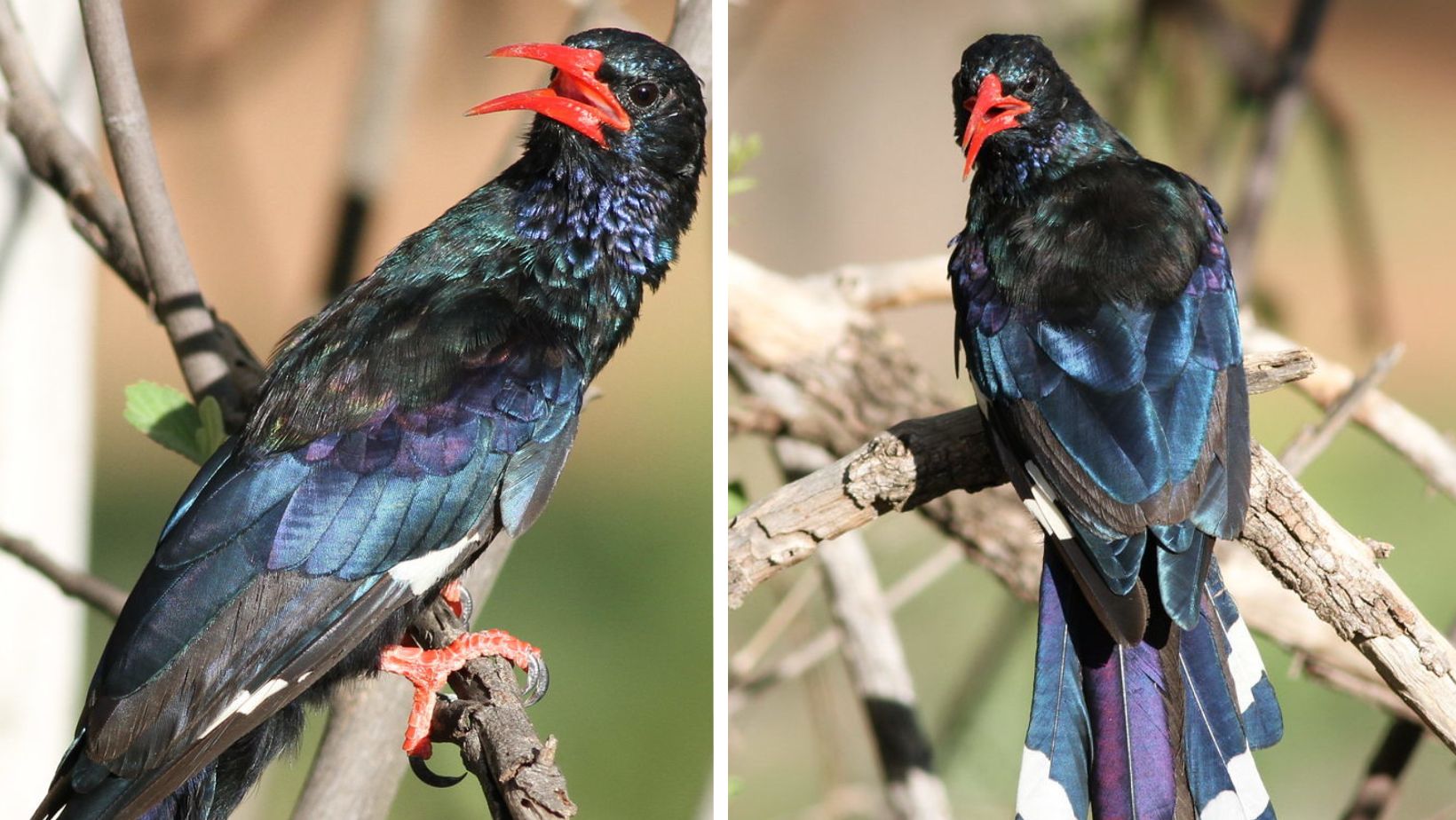
A bright red decurved bill pops from beautiful plumage shaded in layers of shimmering metallic green!
Meet the Green Wood Hoopoe
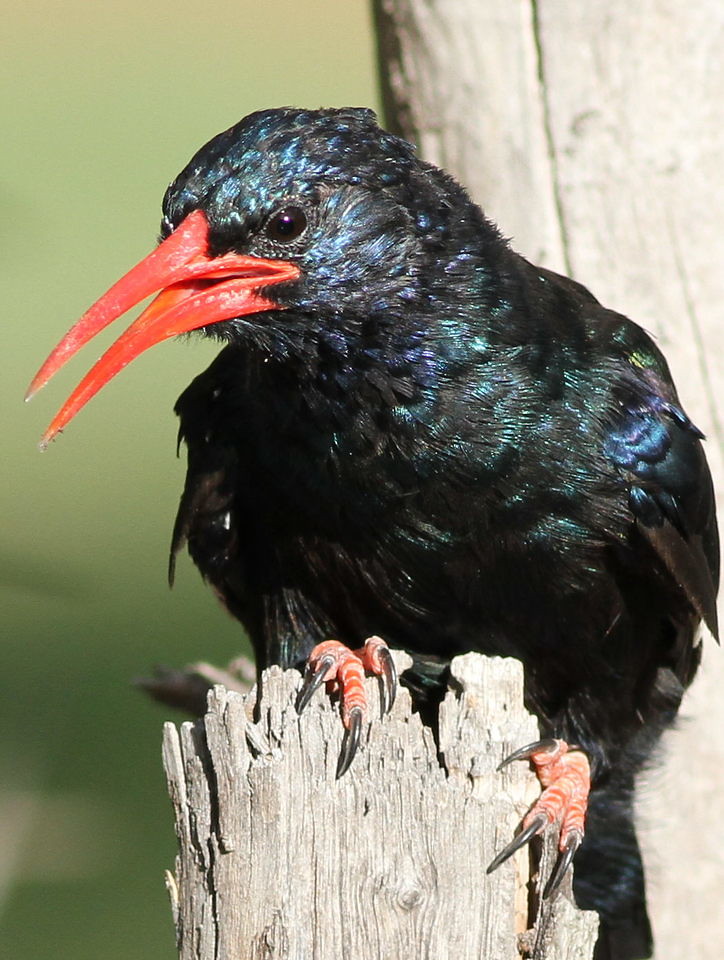 “Green Wood Hoopoe, Phoeniculus purpureus, at Marakele National Park, Limpopo, South Africa” by Derek Keats is licensed under CC BY 2.0.
“Green Wood Hoopoe, Phoeniculus purpureus, at Marakele National Park, Limpopo, South Africa” by Derek Keats is licensed under CC BY 2.0.
The green wood hoopoe (Phoeniculus purpureus) is a magnificent, near-passerine tropical bird indigenous to Africa, measuring up to 44 cm (17 in) in length. Belonging to the family Phoeniculidae, formerly known as the red-billed wood hoopoe, this species boasts a striking metallic dark green plumage with a purple back and a remarkably long, diamond-shaped purple tail. Its wings are adorned with distinctive white markings, while white chevrons on the tail edges add to its identifiable features, not to mention its long, slender, and elegantly curved red bill.
 “Green Wood Hoopoe, Phoeniculus purpureus, at Marakele National Park, Limpopo, South Africa” by Derek Keats is licensed under CC BY 2.0.
“Green Wood Hoopoe, Phoeniculus purpureus, at Marakele National Park, Limpopo, South Africa” by Derek Keats is licensed under CC BY 2.0.
Both males and females exhibit similar appearances.
Juveniles can be recognized by their black bills.
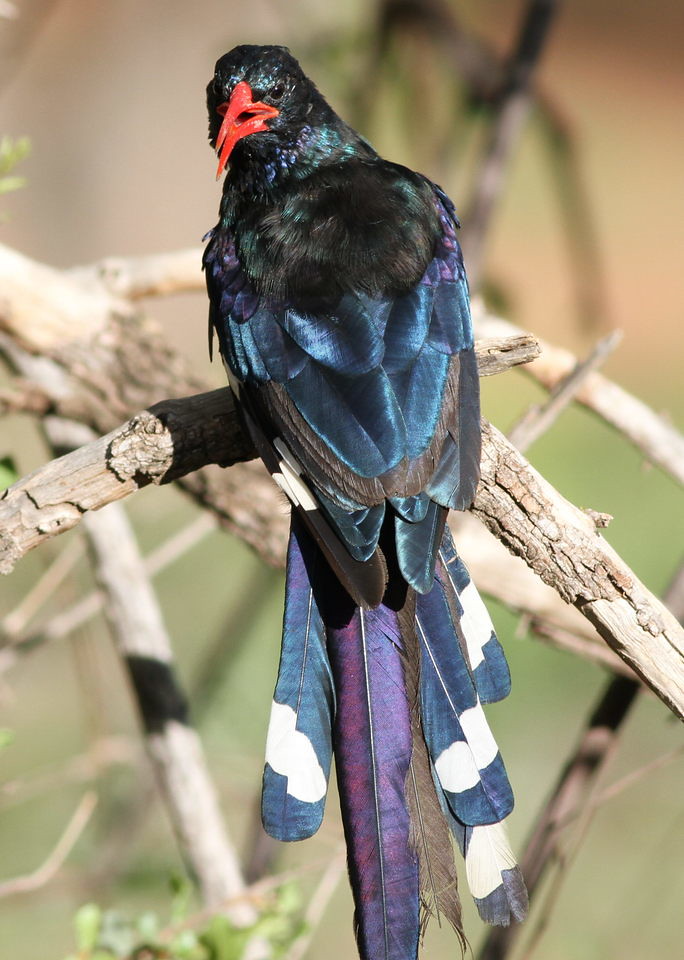 “Green Wood Hoopoe, Phoeniculus purpureus, at Marakele National Park, Limpopo, South Africa” by Derek Keats is licensed under CC BY 2.0.
“Green Wood Hoopoe, Phoeniculus purpureus, at Marakele National Park, Limpopo, South Africa” by Derek Keats is licensed under CC BY 2.0.
The green wood hoopoe thrives in various African regions, including South Africa, Angola, Benin, Botswana, Burkina Faso, Burundi, Cameroon, Central African Republic, Chad, and the Democratic Republic of Congo, among others.
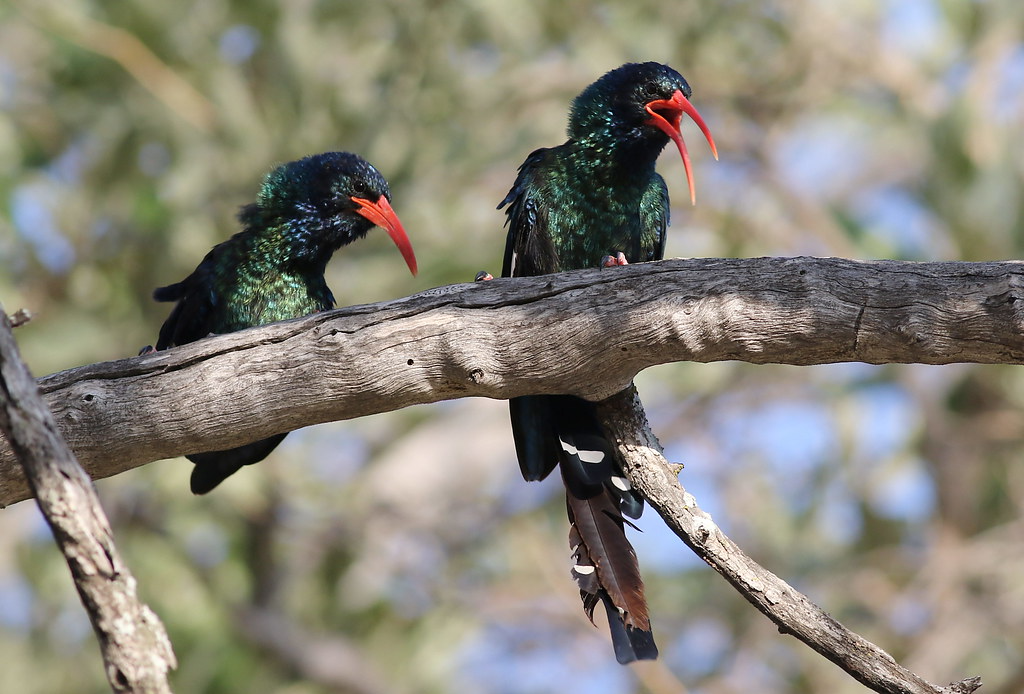 “Green Wood Hoopoe, Phoeniculus purpureus, at Mapungubwe National Park, Limpopo, South Africa” by Derek Keats is licensed under CC BY 2.0.
“Green Wood Hoopoe, Phoeniculus purpureus, at Mapungubwe National Park, Limpopo, South Africa” by Derek Keats is licensed under CC BY 2.0.
Its presence spans different biomes, such as freshwater environments, anthropogenic biomes, forests, savannas, and shrublands.
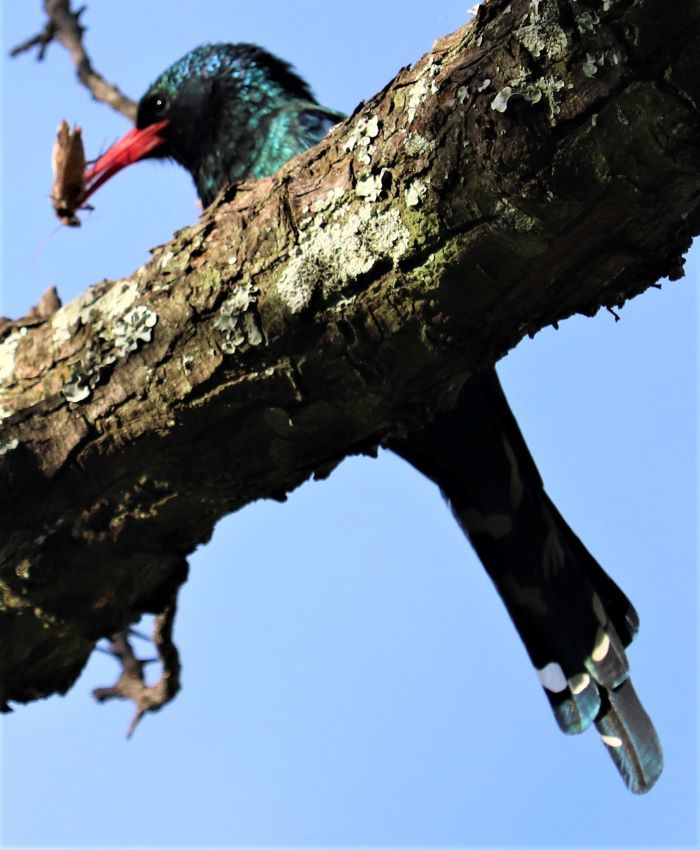 “abubilla arbórea verde, green woodhoopoe, green wood hoopoe, green wood-hoopoe, irrisor moqueur, zombeteiro-de-bico-vermelho” by Dave Brown is marked with CC0 1.0.
“abubilla arbórea verde, green woodhoopoe, green wood hoopoe, green wood-hoopoe, irrisor moqueur, zombeteiro-de-bico-vermelho” by Dave Brown is marked with CC0 1.0.
Being a terrestrial species, the green wood hoopoe is not a migratory bird. It primarily subsists on insects and is often spotted foraging on the ground, termite mounds, or tree trunks. During the non-breeding season, these birds form flocks while maintaining their impressive dexterity to cling to the undersides of branches, meticulously inspecting bark for insects.
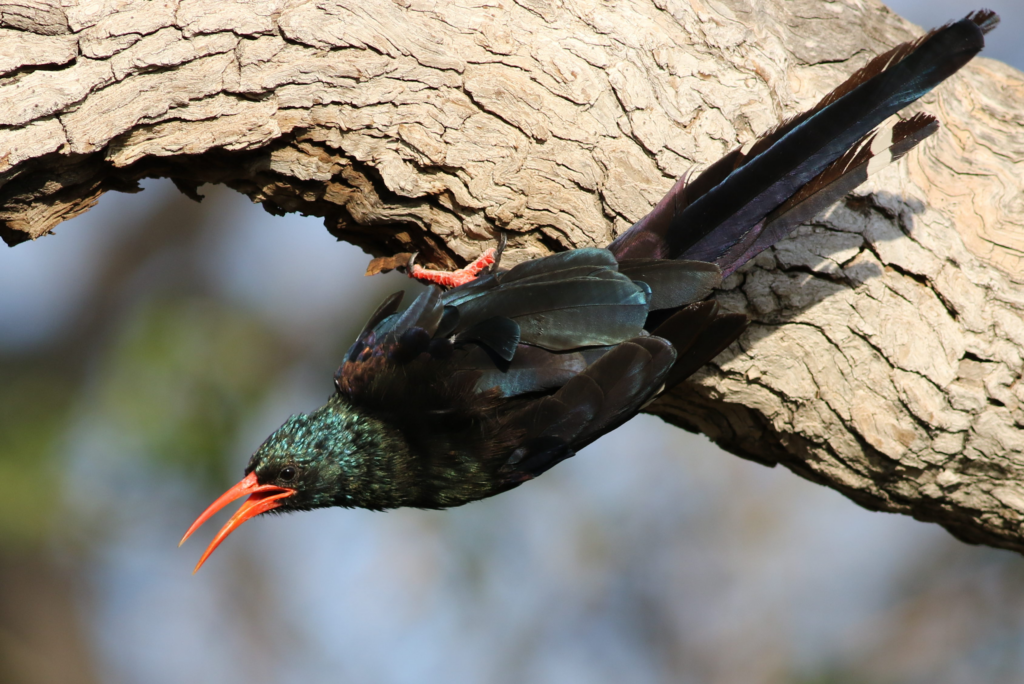 “File:Green Wood Hoopoe, Phoeniculus purpureus, at Mapungubwe National Park, Limpopo, South Africa (30107857321).jpg” by Derek Keats from Johannesburg, South Africa is licensed under CC BY 2.0.
“File:Green Wood Hoopoe, Phoeniculus purpureus, at Mapungubwe National Park, Limpopo, South Africa (30107857321).jpg” by Derek Keats from Johannesburg, South Africa is licensed under CC BY 2.0.
As for its mating habits, the green wood hoopoe is a cooperative breeder and a common resident in forests, woodlands, and suburban gardens across sub-Saharan Africa. Within these groups, typically consisting of around a dozen birds, only one pair participates in breeding activities. The female lays two to four blue eggs in a natural tree hole or an old barbet nest and incubates them for approximately 18 days. After hatching, the rest of the group actively participates in feeding both the mother and the nestlings, even after the young ones have left the nest. Fearless in defense, this species shows great courage in protecting its offspring from intruders. However, it is known to be parasitized by the greater and lesser honeyguide.
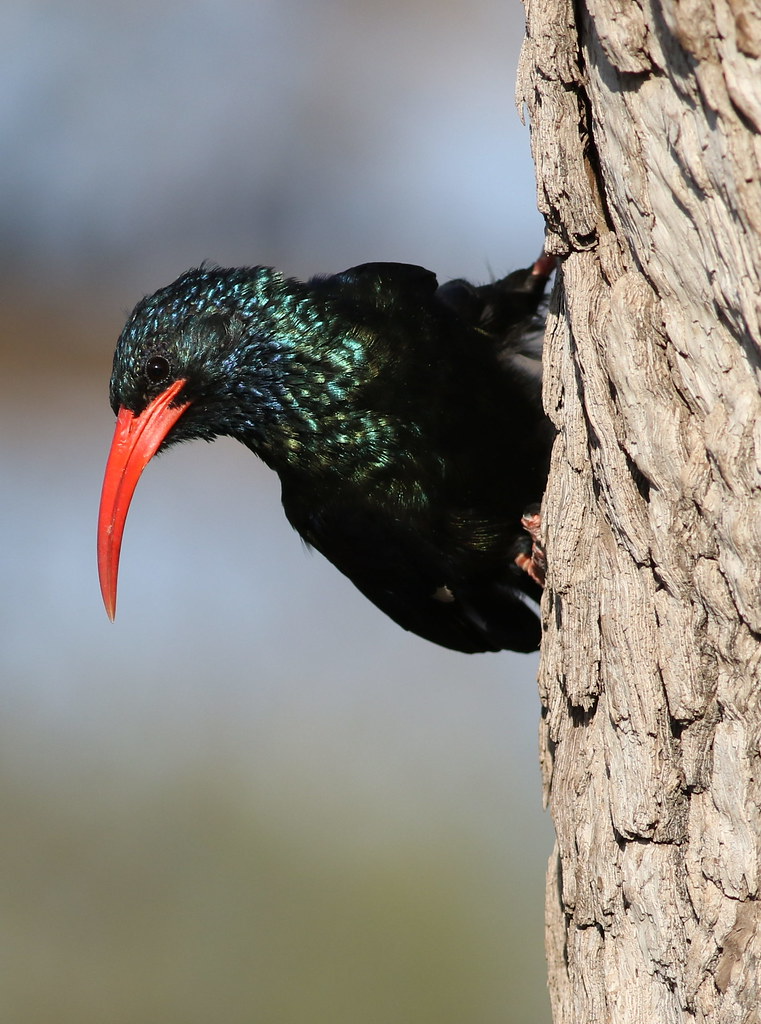 “Green Wood Hoopoe, Phoeniculus purpureus, at Mapungubwe National Park, Limpopo, South Africa” by Derek Keats is licensed under CC BY 2.0.
“Green Wood Hoopoe, Phoeniculus purpureus, at Mapungubwe National Park, Limpopo, South Africa” by Derek Keats is licensed under CC BY 2.0.
The population of the green wood hoopoe is currently assessed as Least Concern by the IUCN Red List of Threatened Species, despite a declining trend. The species remains widespread and common throughout its vast range, making it a treasured presence in African landscapes.
 “File:Green Wood Hoopoe, Phoeniculus purpureus, at Marakele National Park, Limpopo, South Africa (16340842701).jpg” by Derek Keats from Johannesburg, South Africa is licensed under CC BY 2.0.
“File:Green Wood Hoopoe, Phoeniculus purpureus, at Marakele National Park, Limpopo, South Africa (16340842701).jpg” by Derek Keats from Johannesburg, South Africa is licensed under CC BY 2.0.
Watch this bird in action:
This article uses material from Wikipedia.org which is licensed under the GNU Free Documentation License via Copyright Wikipedia. Images on this page are the sole property of the photographers (unless marked as Public Domain). Please read the license and or contact the photographers directly before using them for any purpose. Thank you all.
A Tiny Ball Of Flame Clothed In A Stunning Array Of Color!
Please SHARE this article with all your bird-loving friends and family.

